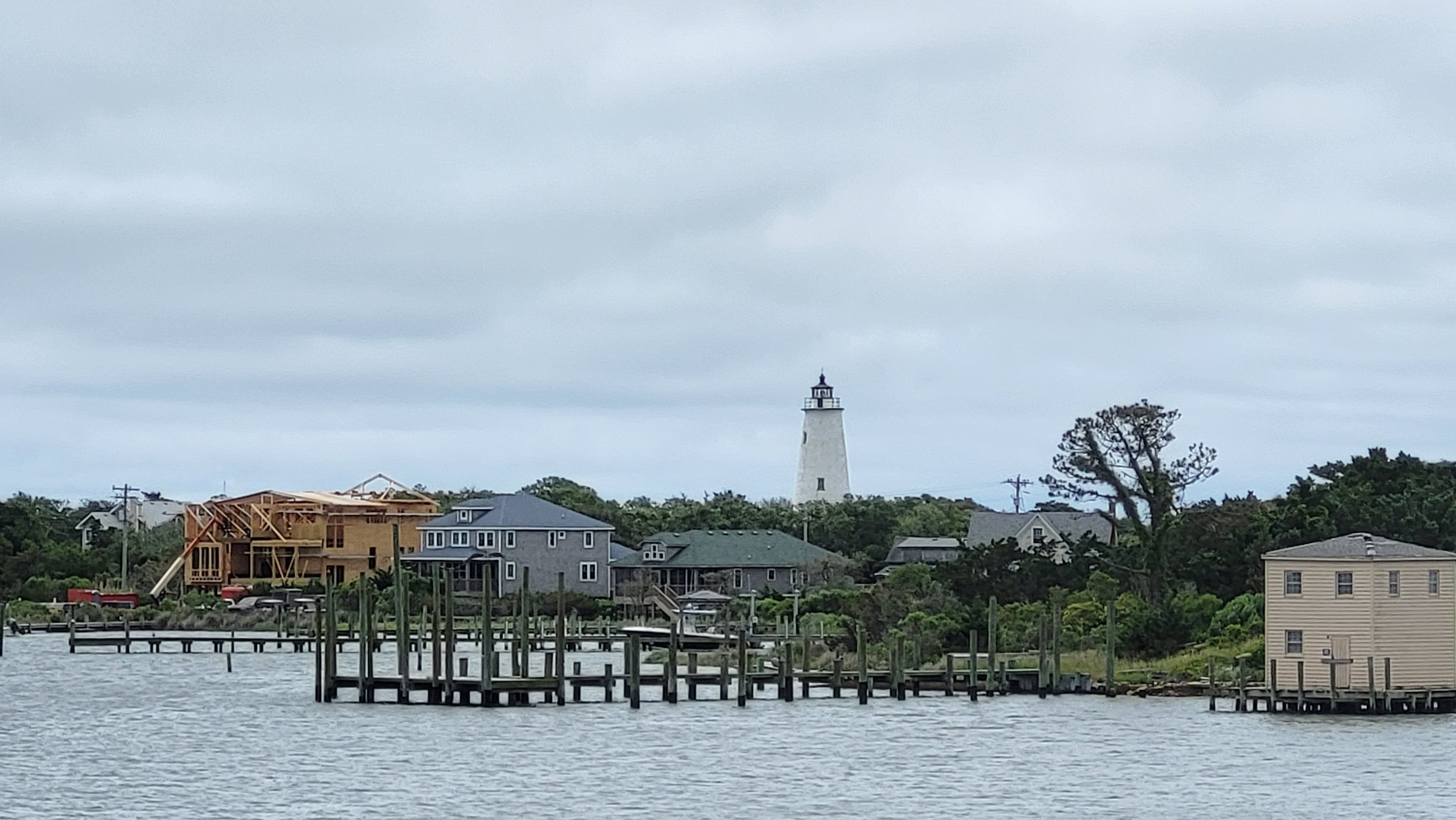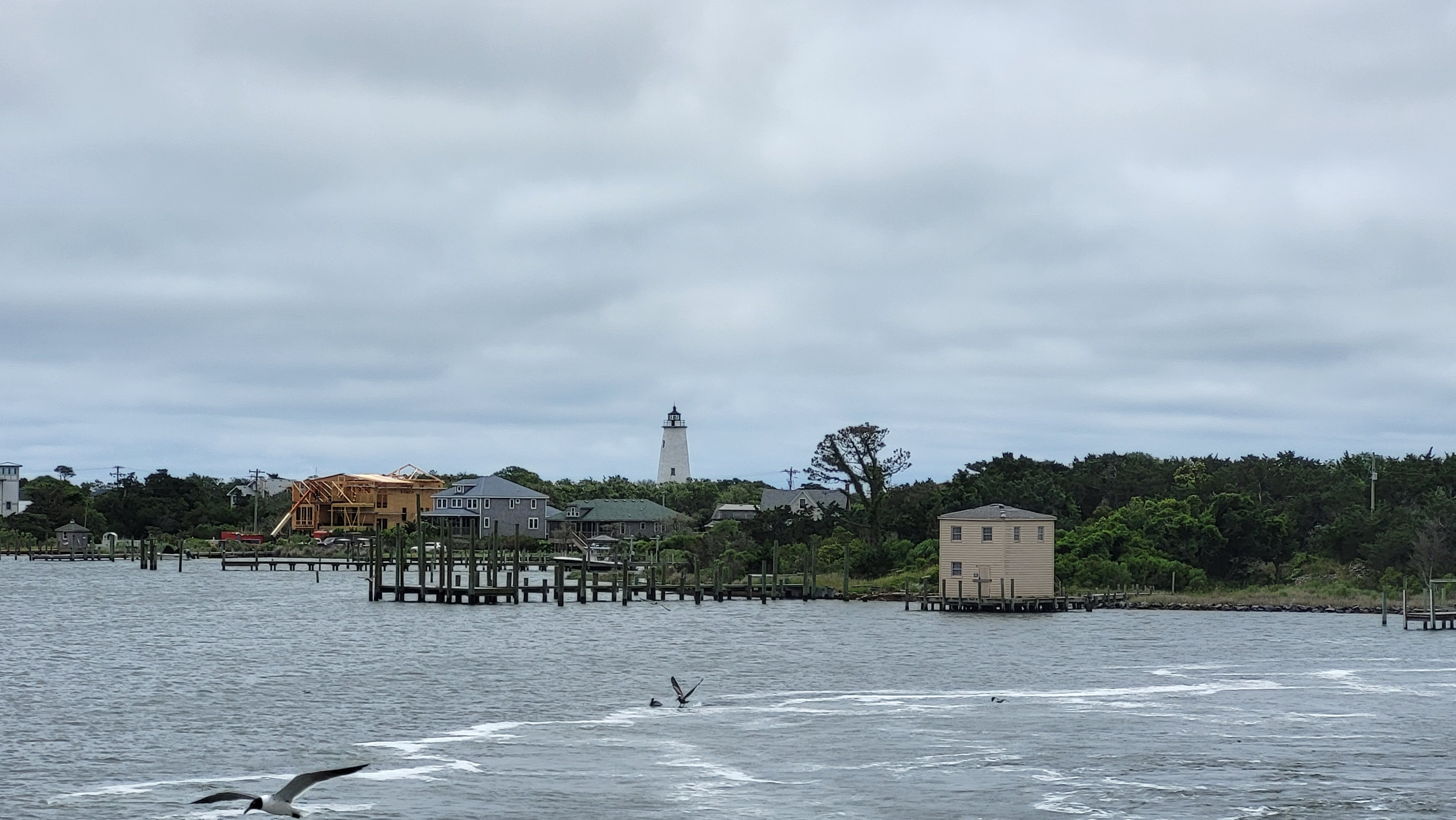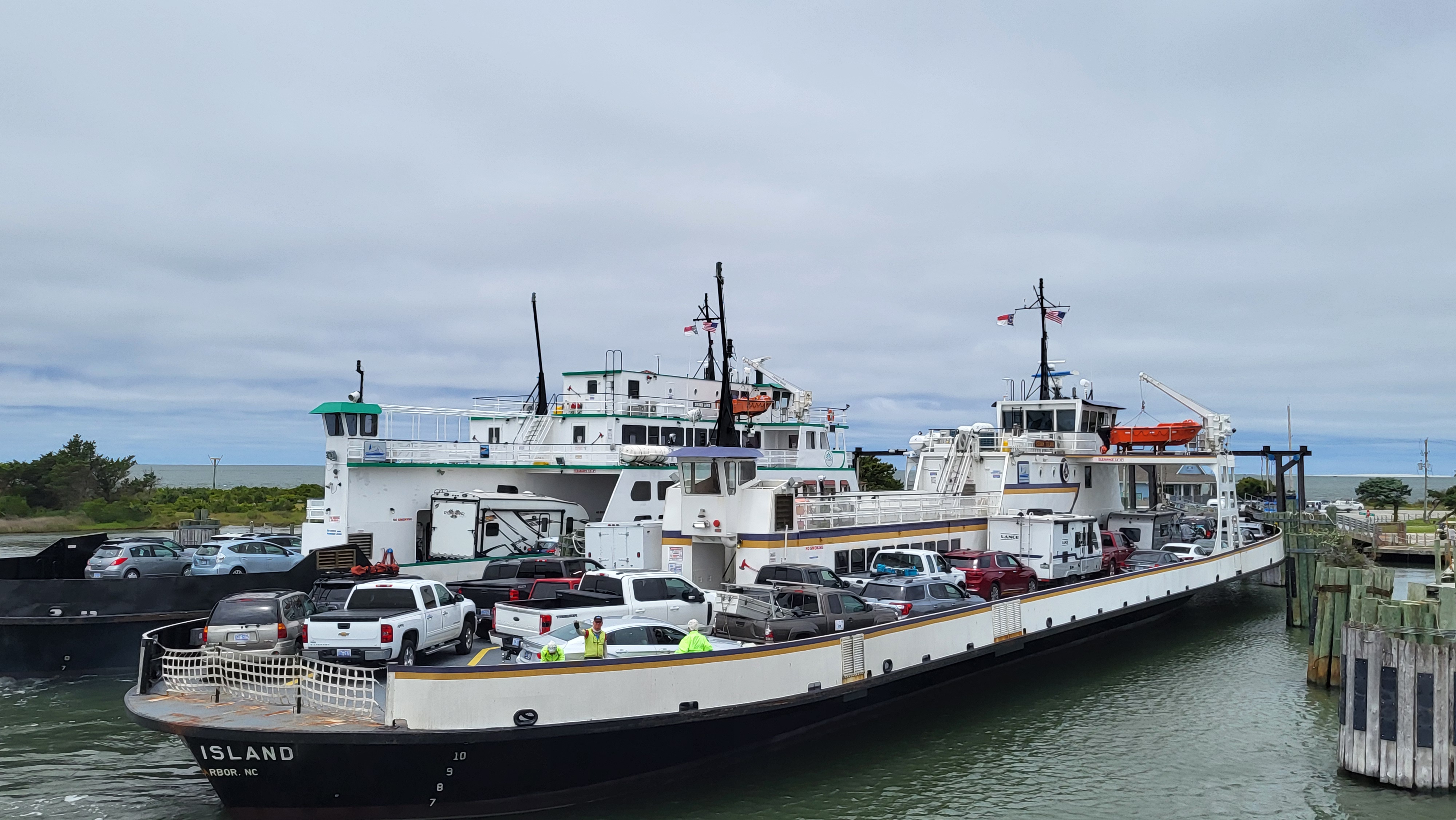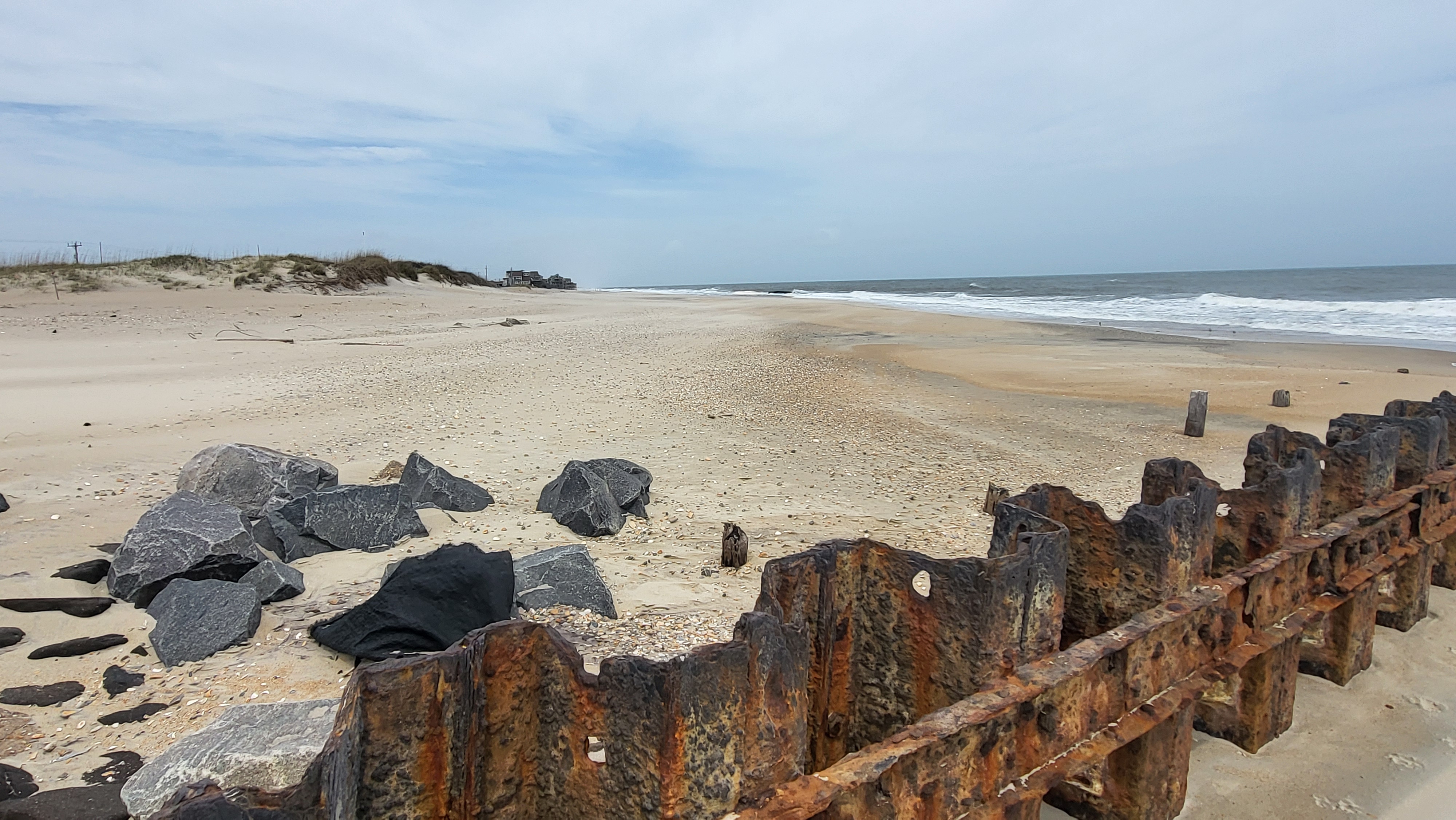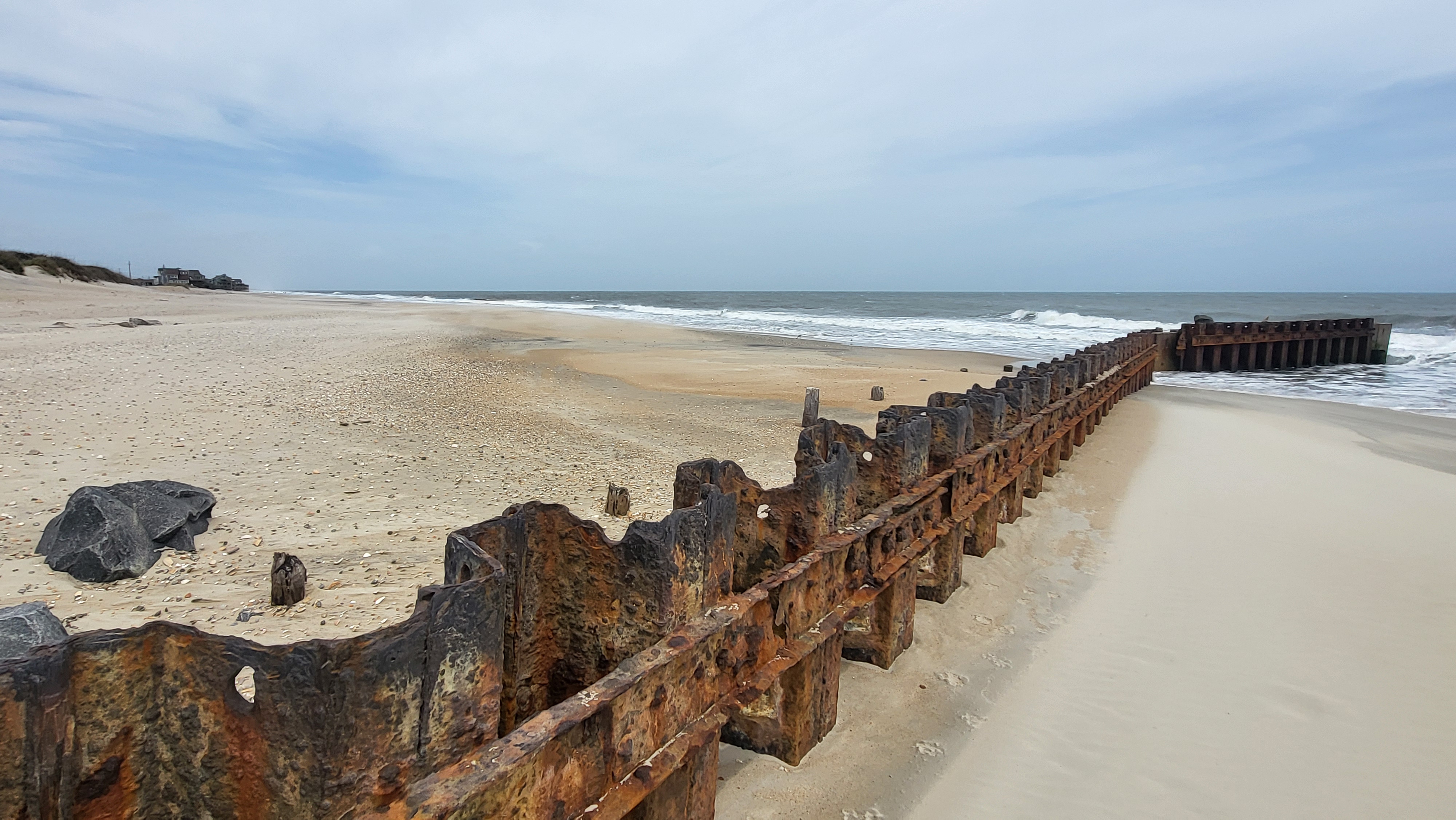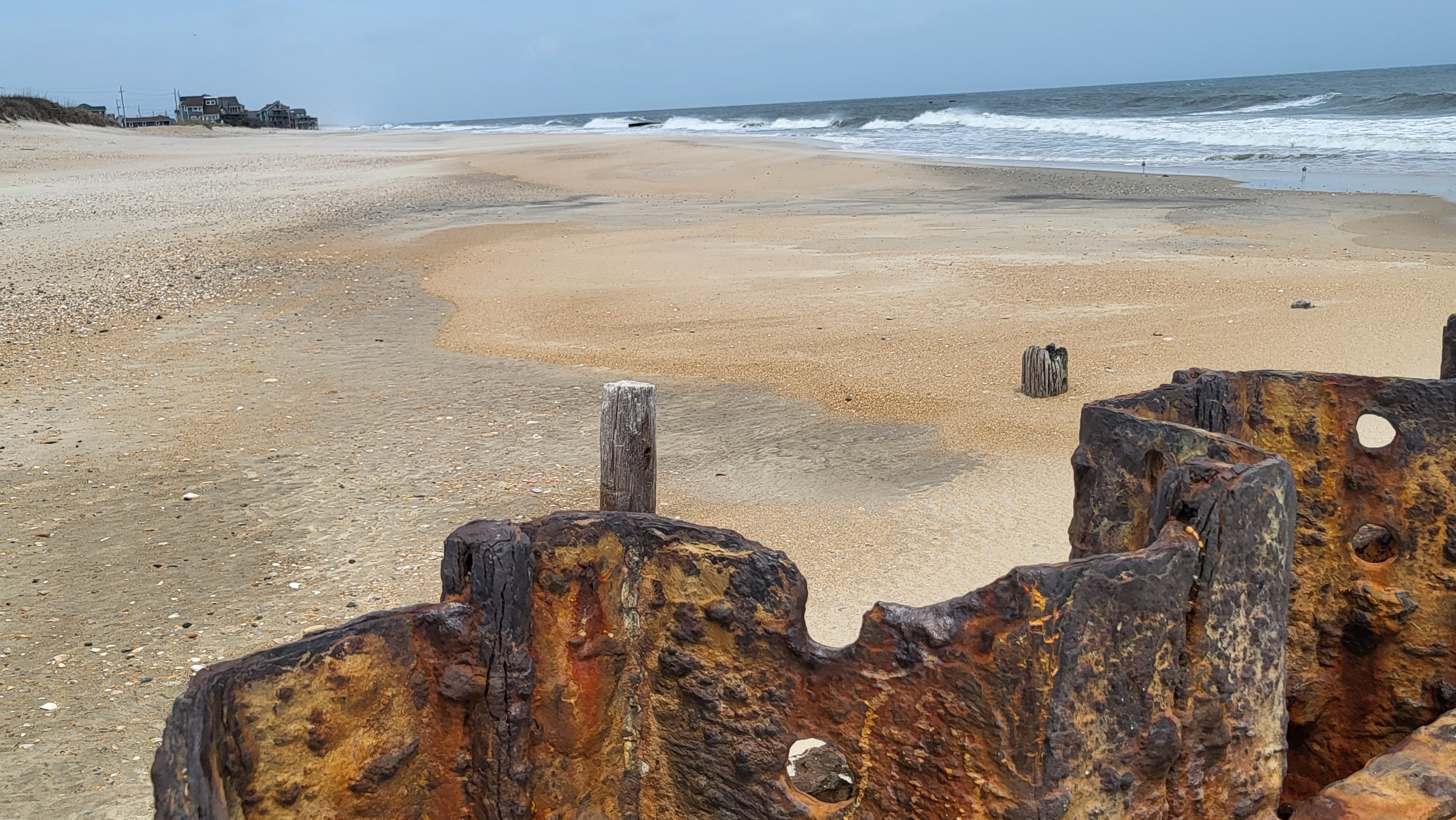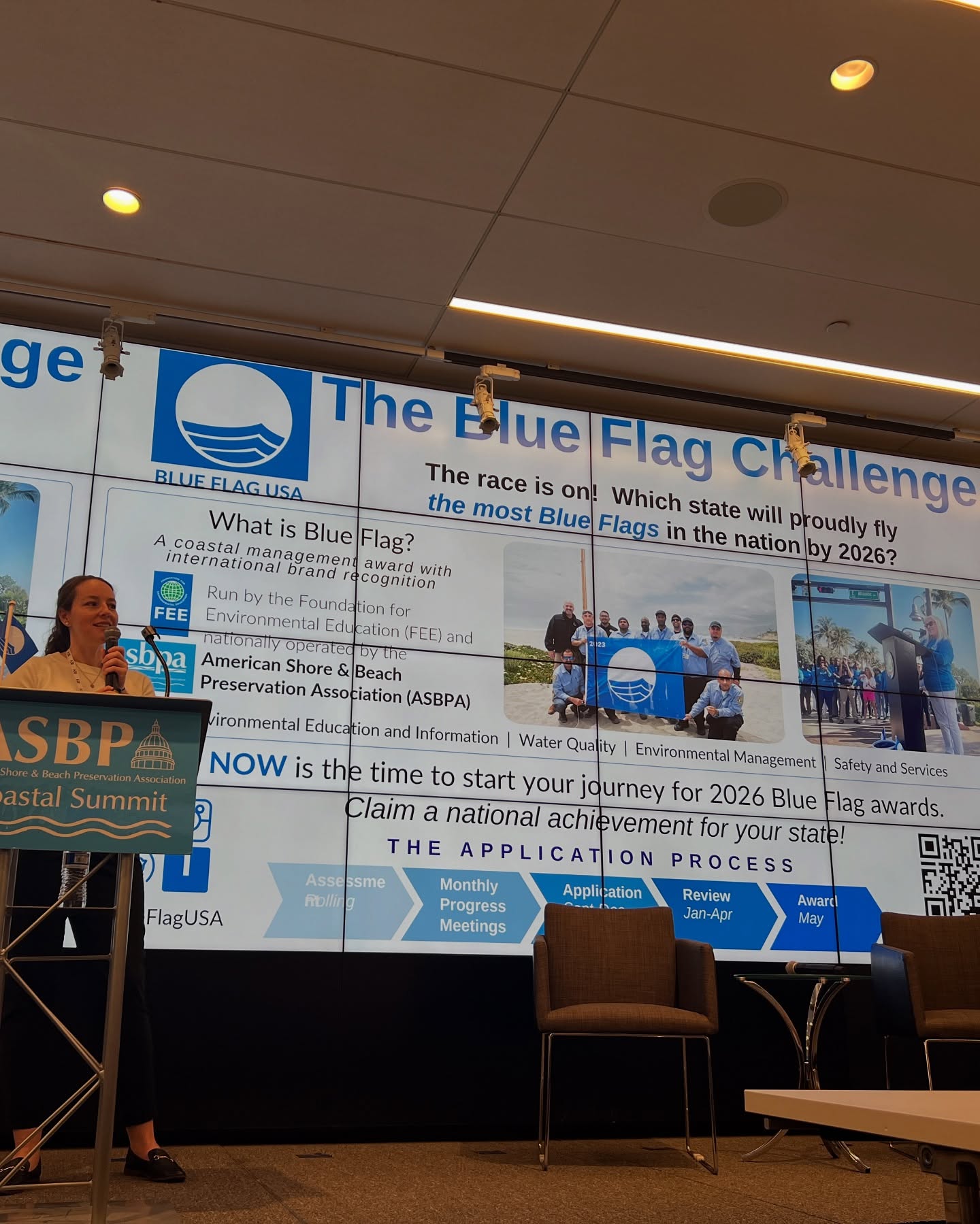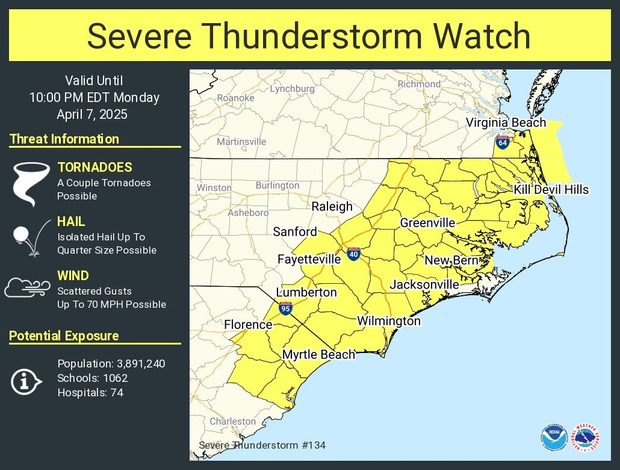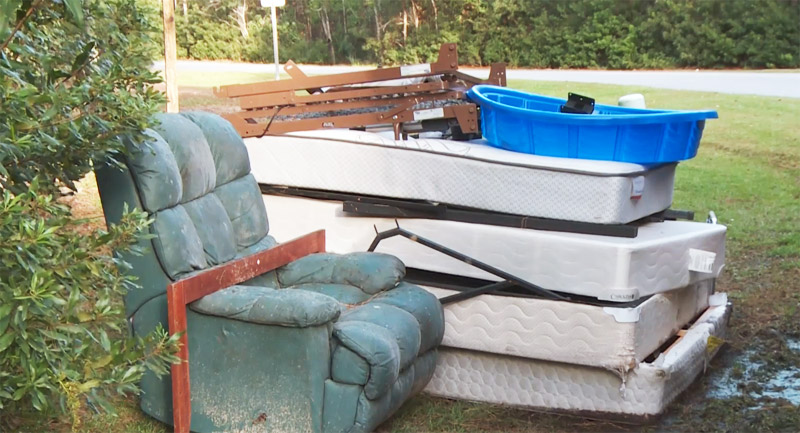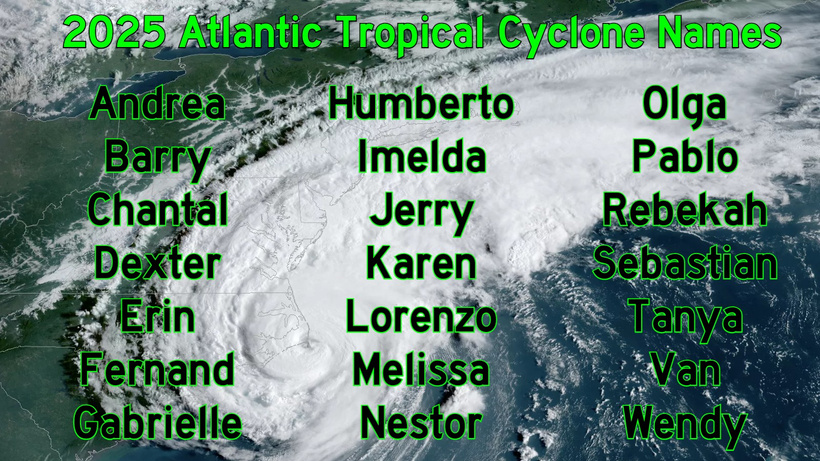Beachgoers reminded to respect the ocean when on the Outer Banks
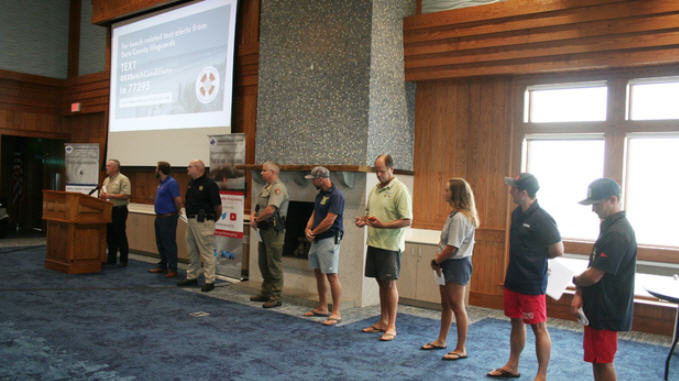
Just ahead of the busy Fourth of July holiday, officials are reminding Outer Banks beachgoers to give Mother Ocean the respect she deserves, whether they are local or from out of town.
Representatives from the various lifeguard services and public safety agencies covering Dare County gathered at Jennette’s Pier in Nags Head on Thursday for a press conference to emphasize the key messages of the award-winning Love The Beach Respect The Ocean campaign that is now in its sixth year.
And while they shared a variety of information about being safe in the ocean, they also shared a recent story of a hazard on the beach that some may not think about until it’s too late.
The press conference took place in conjunction with a forum on rip currents with first responders, National Weather Service meteorologists from up and down the East Coast, and members of the media, and an evening community event on hurricane preparation.
The events were hosted by Dare County Emergency Management Director Drew Pearson and National Weather Service Warning Coordination Meteorologist Erik Heden from the Newport/Morehead City office.
Pearson emphasized the various ways the consortium of agencies that cover the Dare County and Ocracoke beaches provide the public to stay informed about the latest conditions, along with video and other information about how to safely enjoy a trip to the beach, which can be found at LoveTheBeachRespectTheOcean.com.
“Rip currents kill more people in our area than tornadoes flooding, lightning and wind combined,” Heden said.
“Almost 200 rip current deaths on the beaches of the Carolinas since the year 2000,” Heden said. “Nearly half of those deaths were people from out-of-state.”
While rip currents were the main topic of discussion during the event, other beach safety tips were highlighted by the group.
Dare County Sheriff’s Office Capt. Jack Scarborough, administrator of 911 Central Communications for Dare, Hyde and Tyrrell counties, stressed the importance of knowing your location in case of an emergency.
“We cannot send you the resources you need in a timely manner, or the correct resource, unless we know where you’re at, “Scarborough said. “Make sure you take note of which beach access you go over, which way you turn when you go over the access.”
“Or if you’re down south in the (Cape Hatteras National Seashore), what a ramp you go over,” Scarborough added.
He also reminded visitors to make sure they know the street address of the property where they are staying.
911 operators do not have access to the rental company property identification numbers or the names of houses that are assigned by their owners.
He also reminded those who have an emergency that call 911 they do have ways to track down people who call from cell phones, but its not entirely accurate.
“The other thing is, when you call 911, be prepared to answer a lot of questions,” Scarborough said. “Just know while you’re answering this question, it is not delaying help. There’s someone else in the room that is sending help as soon as the call comes in…it allows us to gather the most accurate, perfect information to your emergency so we can notify the first responders, so they can respond in the proper manner and bring the proper equipment, and be mentally prepared when they arrive to handle the situation.”
Cape Hatteras National Seashore Chief Ranger Mike Henry reminded beachgoers of the five lifeguarded beaches that are available in the park located at Coquina Beach near the Bodie Island Lighthouse, adjacent to the Cape Hatteras Lighthouse in Buxton, at the bathhouse south of Frisco and near the National Park Service campground on Ocracoke.
Henry also reminded beachgoers about the dangers of digging holes in the sand.
“Digging beach holes can be serious to not only the visitors, to our emergency response folks, and to the wildlife that use these beaches,” Henry said.
“Avoid digging deep holes. They are unstable. They can collapse in the people that are actually digging the hole and cause serious harm or injury,” Henry said. “Don’t dig holes deeper than knee deep, and if you do make sure you fill them in when you leave.”
“If you’re traveling along the beach, and you see a hole that’s there, consider taking a few minutes to fill that hole in to ensure that other people coming along can use the beach in a safe manner,” Henry said.
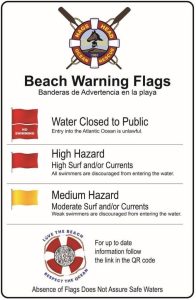 Town of Nags Head Ocean Rescue Capt. Chad Motz reviewed the new flag system that is being used along the Dare and Ocracoke beaches starting this year that helps create a more unified message about ocean conditions.
Town of Nags Head Ocean Rescue Capt. Chad Motz reviewed the new flag system that is being used along the Dare and Ocracoke beaches starting this year that helps create a more unified message about ocean conditions.
The flags have been adopted by the International Life-Saving Federation and the United States Life-Saving Federation.
“Whether you go to Florida, New Jersey or Australia, everywhere around the world, when they see a flag (it) has universal meaning,” Motz said.
Asked later about the effectiveness so far this season with the new flag system, the group said this year has been a little different than previous years.
There has yet to be a day where the double red flags have had to be posted, but a few days last week where single red flags were up due to a high risk of rip currents.
They said lifeguards did a good job of communicating the hazards, along with the flags, and beachgoers seemed to be more mindful of going in the ocean, which led to fewer rescues than in past days where there were similar conditions.
Kill Devil Hills Ocean Rescue Supervisor David Elder has been at the forefront locally of rip current research from the lifeguard side of the equation.
That included helping the National Weather Service and other oceanography experts development a computer model that could eventually be used to forecast surf conditions up to six days in the future.
“Our hope is it eventually will be no longer considered to be experimental,” Elder said.
He also detailed how lifeguards are at the forefront of making beachgoers have a safe and enjoyable day, and at the same time encouraging the public to be aware of the various things they should prepare for when they come to the beach.
“We make you safer by observing, evaluating the nearshore swimming areas, advising, informing, preventing, and, as needed, changemakers to rescuing and assisting people who have placed themselves in harms way,” Elder said. “As we have prepared and trained our lifeguards, we hope that our patrons…will also prepare.”
That includes not only knowing what conditions are like in the water, but also preparing for what other weather conditions are like by wearing sunscreen, bringing shade to get out of the sun, and staying hydrated.
Hatteras Island Rescue Squad Supervisor Molly Greenwood talked about the dangers of breaking waves right along the beach, known as shorebreak.
Rogue waves, also known as sneaker waves, are suddenly appearing larger waves that can happen even on days when the ocean appears almost calm.
“They can be deadly…they can cause broken bones, concussions, spinal injuries and head injuries, especially in the shallow water,” Greenwood said.
“Strong swimmers even struggle with his rogue waves, they can be deceptive, and you can’t see them coming,” Greenwood said.
She said children and older adults can be especially susceptible to shorebreak.
Kitty Hawk Ocean Rescue Director Joe Case spoke on the dangers of leaving unattended equipment on the beach.
“When we leave items like chairs, umbrellas, coolers and toys on the beach, we might not realize the significant impact they have,” Case said.
That can pose a hazard to animals, especially sea turtles that come up on the beach to nest.
Items left on the beach can make it difficult or impossible for them to reach their suitable nest,” Case said. “Additionally, these objects can entangle or trap other animals injury or death.”
“Another concern is environmental…items left behind can be swept in the ocean by tides or strong winds, contributing to marine debris,” Case said.
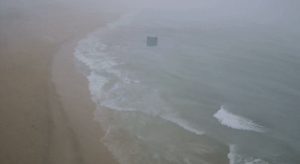 A perfect example of that happened just a few hours before the press conference.
A perfect example of that happened just a few hours before the press conference.
Strong wind gusts from a thunderstorm blue a tent out into the ocean. It was recovered from the water by Jennette’s Pier staff after it became entangled in the pilings.
Case also reminded beachgoers that leaving tents, chairs and other equipment on the beach presents hazards to first responders on their way to call, and also to people who are just walking along the beach at night.
And it is illegal to leave personal items on the beach in the Dare County municipalities and Cape Hatteras National Seashore, with some towns having the right to remove the gear and throw it away.
One of the more shocking parts of the press conference came from Ben Abe, Water Rescue Captain with the Chicamacomico Banks Volunteer Fire Department, and a member of Dare County EMS, when he spoke about “blue sky hazards”.
That’s when the weather and wave conditions may appear safer than they actually are.
“Just because there’s no risk doesn’t mean there’s no risk,” Abe said.
“Be conscious of the sun and heat. Wear sunscreen to protect your skin. Take breaks from the sun, go back to the house in the air conditioning, jump in the pool to cool down your core body temperature, hydrate appropriately,” Abe said.
He said that alcohol consumption when you’re in the sun leads to dehydrating quicker, so limit your intake.
“Recognize some of the signs and symptoms of heat-related illnesses…and when it progresses further into heat exhaustion,” Abe said.
“Leave your pets at home because it’s harder for them to cool off…your pets, after they jump around a lot on the beach, can’t cool themselves as quickly,” Abe said.
And when air temperatures reach the high levels we’ve seen over the past week, making sure humans and pets have foot protection is also very important.
The Duck Fire Department measured a temperature of 143 degrees on the tarmac outside their station on Wednesday afternoon around 3:30 p.m.
About that same time, Abe was on a Dare EMS call in Duck that involved a man who was injured just by walking in the hot sand.
“We had to take him to the hospital because he had second degree burns,” Abe said. “It burned the skin completely off the soles of his feet.”
Alder added that it is important for everyone to wear some type of foot protection when walking on the sand to avoid being burned, especially young children, older adults, and anyone with health conditions such as diabetes and poor circulation.
Abe also reminded beachgoers to keep a clear path open for lifeguards and emergency personnel to be able to make their way down the beach.
Lifeguards will ask those to move tents and other gear if it obstructs their views of the water.
Mirek Dabrowski, who is director of Ocean Rescue for Duck, Southern Shores and the lifeguard beaches in Cape Hatteras National Seashore, wrapped up the presentation with reminders about swimming near a lifeguard, which is the safest way to enjoy the ocean.
“A lifeguard is going to provide you all the information, and also show you how to utilize that information,” Dabrowski said. “And they also will tell you about any hazards that there might be, and what the conditions are on that exact stretch of ocean.”
The Love The Beach Respect The Ocean campaign, which was instituted in 2018 as a partnership of Dare County, the five oceanfront towns, and the National Park Service, has since received national recognition.
Last November, the program was honored with the 2023 Preparedness Award from the International Association of Emergency Managers.
And it has had a significant impact on the Outer Banks beaches being a safer experience for visitors and residents.
“Deaths have dropped to an all-time low on the Dare beaches, and we hope it stays that way,” Elder said.





